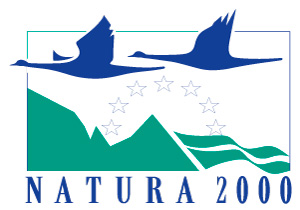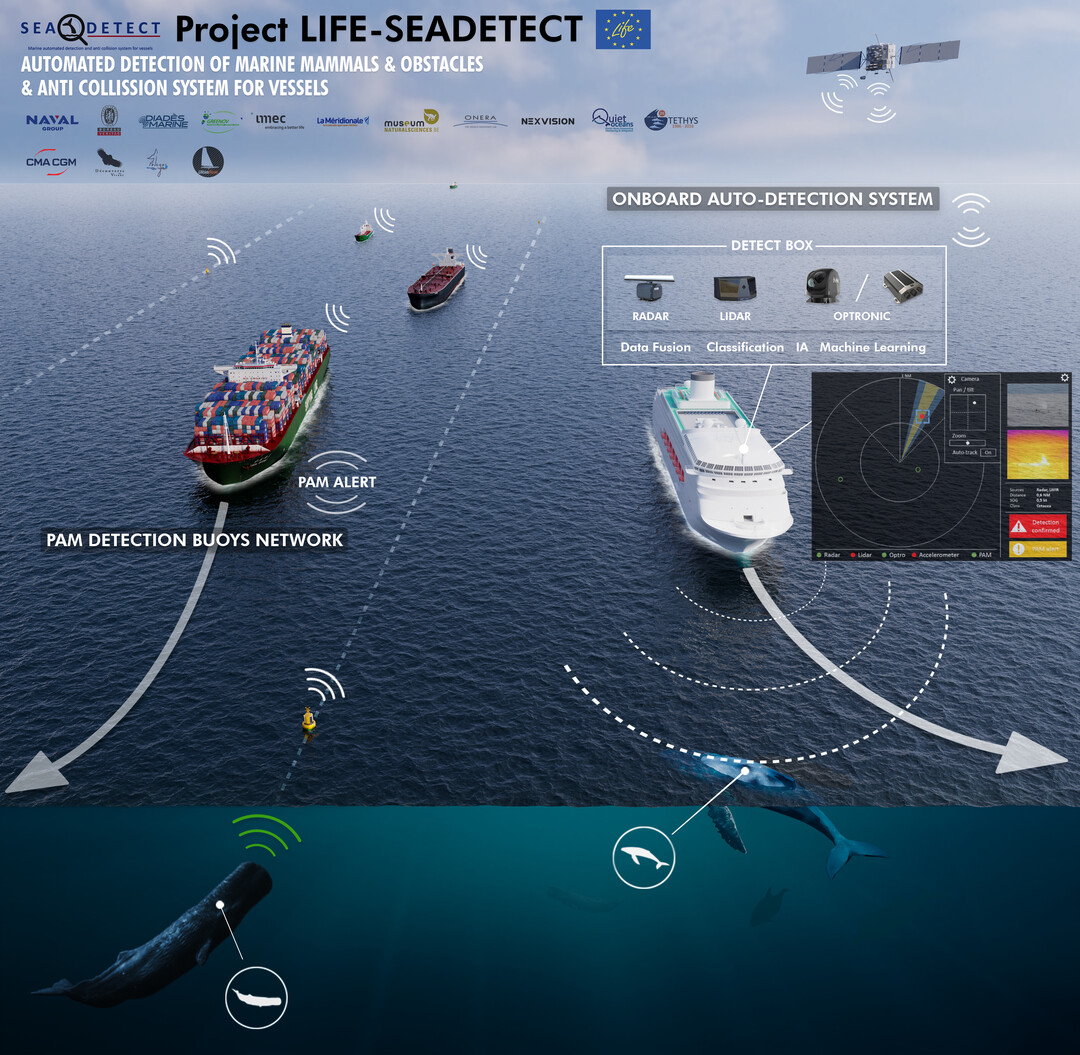Ship collision with Cetaceans is known to be the first non-natural threat to large cetaceans. In order to drastically reduce collision the LIFE SEADETECT project aim to build innovative systems embedded on boats and buoys. These real time systems will detect cetaceans up to a range of 1km in all weather conditions, raising awareness of the presence of cetaceans and thus change of trajectory in order to avoid collision for boats.

The systems will be composed of :
- Onboard Multisensors system, such as innovative stabilized pulse compression radar, Lidar, and multi-spectral camera. Data output of these devices will be merged and cross correlated to improve the performance of the global system.
- Passive acoustic Monitoring (PAM) integrated on buoys. the network of PAM will allow to pinpoint the location and displacement of cetaceans.
Detection coming from both systems will be send to the REPCET software. Vessels equipped with the latter will know the presence of cetacean on their course, and hence will be able to adapt the trajectory and speed to avoid collision with big cetaceans.
The project will last 3 years, with 3 evaluation campaigns in order to setup and calibrate systems and two 6 months campaign for the PAM system during critical period for ship strike with cetacean. Vessels presenting the highest risk of collision will also be equipped with the onboard multisensory systems.
Finally communication and dissemination actions will be taken to deploy buoys and onboard systems of many boats. Ultimately the objectives is to save at least 100 cetaceans per years.


